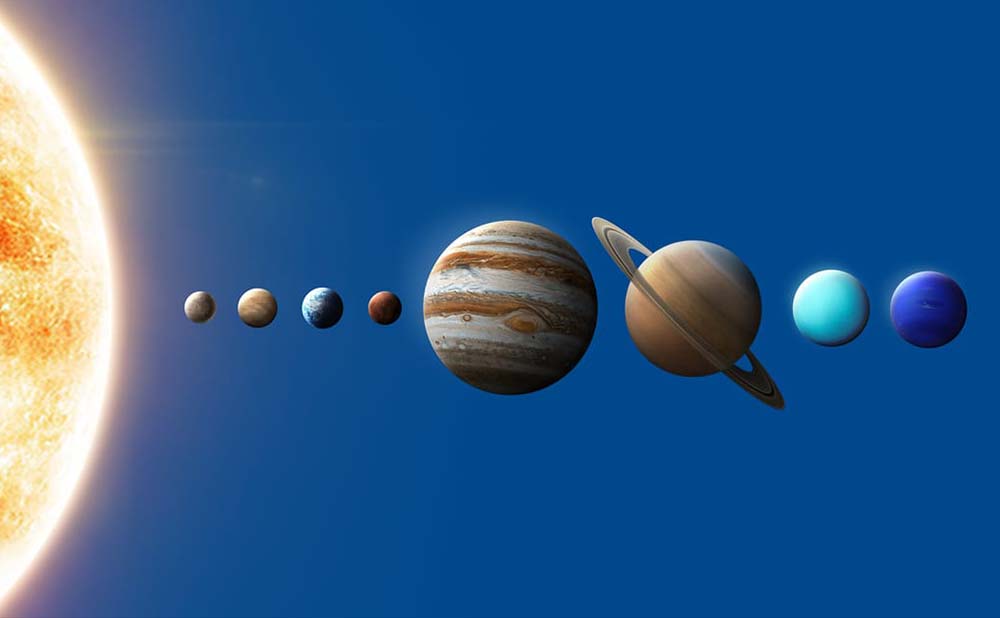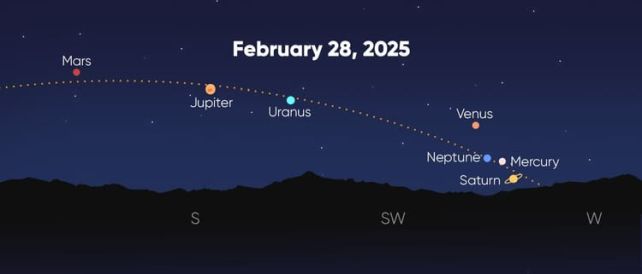7 Planets Aligning 2025: Everything You Need to Know

7 Planets Aligning 2025: Everything You Need to Know
What is Planetary Alignment?
Planetary alignment is an astronomical term that refers to multiple planets gathering on one side of the Sun. This phenomenon creates a striking visual in the night sky, where several planets appear in close proximity.
On February 28, 2025, we will witness a rare and spectacular planetary alignment involving seven planets: Saturn, Mercury, Neptune, Venus, Uranus, Jupiter, and Mars. This event is notable as such alignments do not occur frequently—this particular arrangement won't happen again for another decade!
When and Where to Observe the Alignment
The best time to observe this planetary alignment will be shortly after sunset on February 28, 2025. Here’s what you can expect to see:
- Mars (magnitude -0.4) will be the highest in the sky, located in Gemini.
- Jupiter (magnitude -2.3), the second brightest planet, will be slightly lower in Taurus.
- Uranus (magnitude 5.8) will be near the boundary of Aries and Taurus, visible with a telescope or under very dark skies.
- Venus (magnitude -4.8), the brightest planet, will be seen in Pisces.
- Neptune (magnitude 7.8) will also be in Pisces but requires a powerful telescope to view.
- Mercury (magnitude -1.2) will be close to the Sun in Aquarius.
- Saturn (magnitude 1.1) will be the most challenging to spot due to its proximity to the Sun.
Global Observation Dates
Observation conditions may vary by location, so here are some specific dates for different cities around the world:
- Tokyo: February 22
- Mexico: February 25
- New York: February 25
- Hong Kong: February 27
- Berlin: March 2
- London: March 2
- Mumbai: March 3
- Beijing: March 3
- Sydney: March 3
- São Paulo: March 4
Ensure you find a viewing location free from light pollution for the best experience.
How to Observe the Planetary Alignment
To successfully view the seven planets, timing is critical. Since Saturn sets early, your observation window will be short.
Using Professional Tool
Usually the app or web tool such as Stellarium can offer a user-friendly way to locate and track the planets:
- Open the app and go to the "Planets" section.
- Click on "Planet Walk."
- Use the highlighted star map to identify planets.
- Hold your device to match the screen with the real night sky.
The app’s augmented reality mode allows for a more immersive experience, overlaying the star map on your environment.
Tips for Observation
- Choose a dark area with a clear horizon.
- Distinguish between planets and stars: Planets typically don’t twinkle like stars and will shine steadily.
- Look for Venus, which will be the brightest object in the sky after the Moon.
- For fainter planets like Uranus and Neptune, use binoculars or a small telescope.
Understanding Planetary Alignments
There are two common definitions for planetary alignment:
- An astronomical event where planets gather on the same side of the Sun.
- A visual phenomenon where planets appear close together in the sky when viewed from Earth.
Types of Planetary Alignments

Alignments are categorized based on the number of planets involved:
- Mini Alignment: Three planets.
- Small Alignment: Four planets.
- Large Alignment: Five or six planets.
- Great Alignment: Seven planets (sometimes includes Pluto).
Upcoming Planetary Alignments
Mark your calendars for these upcoming alignments:
- February 28, 2025: Great evening alignment including all seven planets.
- April 17, 2025: Small morning alignment of Neptune, Mercury, Saturn, and Venus.
- August 10, 2025: Large morning alignment of Mercury, Jupiter, Venus, Uranus, Neptune, and Saturn.
- February 28, 2026: Large evening alignment including Mercury, Venus, Neptune, Saturn, Uranus, and Jupiter.
- April 18, 2026: Small morning alignment of Saturn, Mars, Mercury, and Neptune.
FAQs
When is the next planetary alignment?
The next significant alignment will occur on February 28, 2025, featuring seven visible planets.
What was the last time all eight planets aligned?
The last complete alignment of all eight planets occurred on April 8, 2024, coinciding with a total solar eclipse observable across parts of North America.
How can I observe the planetary alignment?
To observe the alignment effectively:
- Be aware of the rising and setting times for each planet.
- Use telescopes for distant planets like Uranus and Neptune.
- Leverage tools or app for guidance.
Will there be any effects during the planetary alignment?
No significant gravitational effects or disasters are associated with planetary alignments. They are fascinating celestial events to observe and enjoy.
Conclusion
The February 28, 2025 planetary alignment promises to be an extraordinary sight for astronomy enthusiasts and casual observers alike. Prepare for a memorable evening by planning ahead and using the right tools and techniques to capture this rare cosmic event!








